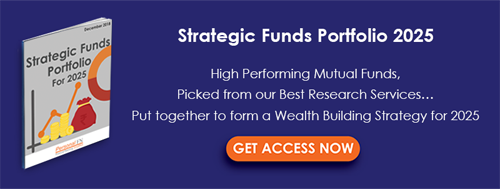 (Image source: Photo by Lum3n.com from Pexels)
(Image source: Photo by Lum3n.com from Pexels)
In investment, one aspect of behaviour finance is Anchoring Bias. This is a psychological tendency to make irrational, illogical investment decisions based on an initial reference point driven by emotions. For instance, when you go shopping, you decide the worth of a T-shirt, irrespective of the price tag, which becomes the price you're willing to pay, the amount you bargain on. This serves as an anchor price.
What is Anchoring Bias?
As per Investopedia, 'An anchoring bias can cause a financial market participant, such as a financial analyst or investor, to make an incorrect financial decision, such as buying an undervalued investment or selling an overvalued investment. Anchoring bias can be present anywhere in the financial decision-making process, from key forecast inputs, such as sales volumes and commodity prices, to final output like cash flow and security prices.'
In this, we will cover the effect of an investor's anchoring bias on mutual fund investments.
As an investor, you tend to invest based on your personality traits, emotional state, and psychological make-up. In other words, due to this bias you think and act in a certain way and consequentially your investment decisions defy logical reasoning.
[Read: Are These 6 Behavioural Biases Preventing You From Investing?]
Anchoring bias, as explained, is one such behaviour that tampers with your rational decision-making process. What happens is, you select one initial reference point (say, first-hand information of the fund's past outperformance) and decide to invest based on that criterion, even though it may not have any logical relevance at that point of time, by ignoring several other crucial factors.
Example: If you see that a Fund XYZ has outperformed the benchmark over a 6-month to 1-year timeframe, you decide to invest your hard-earned money in it. Your anchor was the outperformance-a single piece of available information/data seen over a short span of time, which made you bias towards choosing this fund.
Only to regret later because of the losses you make that drags down your overall portfolio, which then stresses you out.
But if you would have considered the peer comparison along with the benchmark over a longer time period (across different market cycles), the fund's risk in cognisance to your risk profile, fund manager's conviction, and the other quantitative and qualitative parameters, you would not have invested in it.
[Read: How To Check If A Mutual Fund Scheme Is A Consistent Performer Or Not]
Similarly, the decision to avoid investing in any scheme based solely on its underperformance over the short term would be the wrong approach unless it has underperformed across bull phase and bear phase of market cycles in the longer time frame.
And even when the scheme has really dragged your overall investment portfolio in the long term. It is a weed in your investment bouquet and holding onto it for any additional number of years is still a deterrent to accomplishing your financial goal.
Most investors show anchoring biasness:
-
When their purchase price of any asset/investment could have fundamentally been bought at the wrong price.
-
To the recent performance of markets and expect future returns in the same range.
-
To past events and think that the next event in the market will also unfold similarly.
-
To past experiences of losses made and make 'permanent opinions' about markets or investments in general.
How will you overcome anchoring biasness?
Some anchors are good, but provided you look at them in a rational manner; by putting your critical thinking cap on and not sticking to only one reference point. So, while choosing a mutual fund do consider its historical performance as compared to peers and benchmark, the schemes' risk, objective, investment strategy, and number of stocks held in a portfolio (sector and stock exposure) in case of an equity fund.
For debt funds, look for the credit rating exposure of the debt instruments held along with past performance.
[Read: Why Portfolio Characteristics Of A Mutual Fund Are Very Important]
Besides, it is equally important to do a lot of research that involves, looking into Sharpe ratio, standard deviation, fund managers' experience, and the approach they adopt supported with quantifiable data in form of research reports, tools, and by asking your advisers relevant questions.
[Read: Are You Asking The Right Questions To Your Mutual Fund Adviser?]
In short, anchoring bias can be overcome with logical thinking and a practical approach driven by research and not emotions. Once the research is done and good habits are formed, change is the need, and this will prevent you from getting anchored to the initial reference point.
Investment approach...
In current times, ensure that you do not have any anchoring bias, as it could be doing more harm if you have a tendency of timing the market and waiting on the side lines. This will shave off years that could help you in accumulating wealth for your goals due to the power of compounding.
Choose a worthy fund and begin investing via SIP through direct route. Create a strategic portfolio aligned with your financial goals, investment objective, risk profile, and investment time horizon.
A strategic portfolio is based on a core and satellite approach of investing. The 'Core' part of your portfolio should focus on the stable schemes with a long-term view and the 'Satellite' part should revolve around capitalising on short-term opportunities. This unique combination will help you in generating superior returns without taking excessive risks.
Editor's note: Do you want to own an Ultimate Strategic Ready-made Portfolio based on the Core and Satellite approach of investing?
PersonalFN offers you this great opportunity:
The 2019 Edition of PersonalFN's Premium Report, "The Strategic Funds Portfolio For 2025"

If you're looking for "high investment gains at relatively moderate risk", this report is extremely worthy.
In this report, PersonalFN will provide you with a ready-made portfolio of its top equity mutual funds schemes for 2025 that have the ability to generate lucrative returns over the long term.
PersonalFN's "The Strategic Funds Portfolio for 2025" is geared to potentially multiply your wealth in the years to come. Subscribe now!
Add Comments